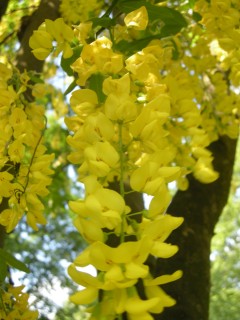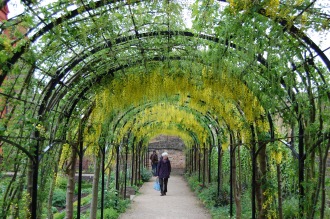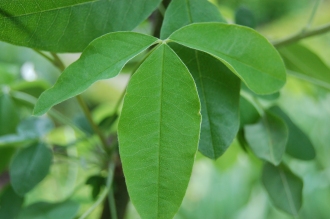Position: Full sun
Flowering period: Late summer to autumn
Soil: Moist, well drained
Eventual Height: 2.5m
Eventual Spread: 2.5m
Hardiness: 7b, 8a, 8b, 9a, 9b
Family: Fabaceae
Subfamily: Faboideae
Amicia zygomeris is a large, upright, deciduous, woody perennial. Its light glaucous green leaves are bi pinnate, composed of two heart shaped leaflets. Its half moon shaped bracts are green and purple and appear at the leaf axis. Its yellow flowers are large and pea like.
Amicia zygomeris, commonly known as Yoke Leaved Amicia or Gotta Pea, is native to the Mexico mountains.
The etymological root of the binomial name Amicia is named after Giovanni Battista Amici (1786 – 1863), an Italian astronomer. Zygomeris is derived from the Greek zugos meaning ‘yolk’ and meris meaning ‘part’.
The landscape architect may find Amicia zygomeris useful as an unusual specimen perennial.
Ecologically, Amicia zygomeris is attractive to some pollinating insects.
The Royal Horticultural Society has given Amicia zygomeris their prestigious Award of Garden Merit in 1993.
Amicia zygomeris prefers moist, fertile, well-drained soils. It tolerates most pH of soil.

















